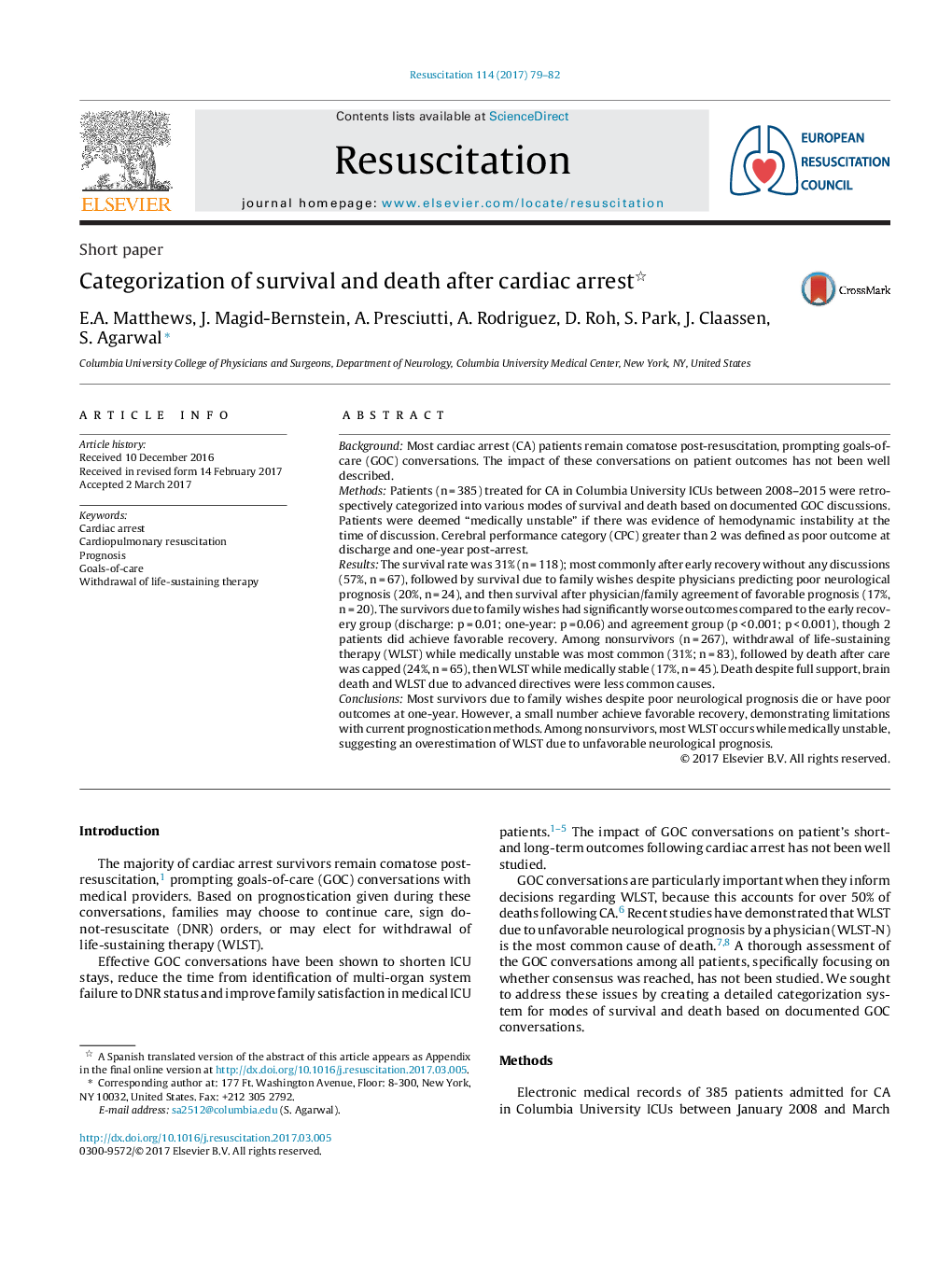| کد مقاله | کد نشریه | سال انتشار | مقاله انگلیسی | نسخه تمام متن |
|---|---|---|---|---|
| 5620014 | 1578970 | 2017 | 4 صفحه PDF | دانلود رایگان |
BackgroundMost cardiac arrest (CA) patients remain comatose post-resuscitation, prompting goals-of-care (GOC) conversations. The impact of these conversations on patient outcomes has not been well described.MethodsPatients (n = 385) treated for CA in Columbia University ICUs between 2008-2015 were retrospectively categorized into various modes of survival and death based on documented GOC discussions. Patients were deemed “medically unstable” if there was evidence of hemodynamic instability at the time of discussion. Cerebral performance category (CPC) greater than 2 was defined as poor outcome at discharge and one-year post-arrest.ResultsThe survival rate was 31% (n = 118); most commonly after early recovery without any discussions (57%, n = 67), followed by survival due to family wishes despite physicians predicting poor neurological prognosis (20%, n = 24), and then survival after physician/family agreement of favorable prognosis (17%, n = 20). The survivors due to family wishes had significantly worse outcomes compared to the early recovery group (discharge: p = 0.01; one-year: p = 0.06) and agreement group (p < 0.001; p < 0.001), though 2 patients did achieve favorable recovery. Among nonsurvivors (n = 267), withdrawal of life-sustaining therapy (WLST) while medically unstable was most common (31%; n = 83), followed by death after care was capped (24%, n = 65), then WLST while medically stable (17%, n = 45). Death despite full support, brain death and WLST due to advanced directives were less common causes.ConclusionsMost survivors due to family wishes despite poor neurological prognosis die or have poor outcomes at one-year. However, a small number achieve favorable recovery, demonstrating limitations with current prognostication methods. Among nonsurvivors, most WLST occurs while medically unstable, suggesting an overestimation of WLST due to unfavorable neurological prognosis.
Journal: Resuscitation - Volume 114, May 2017, Pages 79-82
